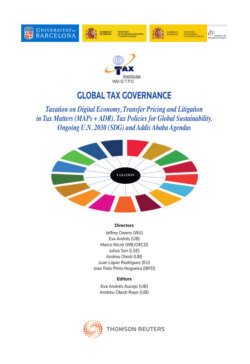Читать книгу Global Tax Governance. Taxation on Digital Economy, Transfer Pricing and Litigation in Tax Matters (MAPs + ADR) Policies for Global Sustainability. Ongoing U.N. 2030 (SDG) and Addis Ababa Agendas - Jeffrey Owens - Страница 34
На сайте Литреса книга снята с продажи.
THE FUTURE OF MONEY: CENTRAL BANK DIGITAL CURRENCIES
ОглавлениеTaxing cash payments can be challenging. The OECD document Technology tools to tackle tax evasion and tax fraud (2017) illustrates some countries’ experience to prohibit the use of cash payments above certain thresholds (France, Greece, Spain), or for certain economic activities such as those related to immovable property (Argentina, Austria, Italy) or to monitor ATM withdrawals (Finland) or the right for certain businesses to refuse payment in cash (Sweden).
Now addition to cash, digital currencies have emerged. Private digital currencies are commonly referred to as cryptocurrencies and emerged just over 10 years ago with the advent of Bitcoin. Cryptocurrencies have rapidly grown and today there are over 3,000 types worth approximately $1 trillion. The two most popular, Bitcoin and Ethereum, represent 60% and 15% of all value respectively. These and many others float in value relative to fiat currencies like the USD and Euro. They are generally used as investments rather than a means of exchange. The biggest tax challenge is that their pseudo-anonymous and decentralized nature presents challenges for income taxation. Third party reporting of transaction data is hindered by the fact most transactions are not run through a centralized exchange or broker but executed person to person across the network.
In the last few years cryptocurrencies pegged to a reference, mostly the US dollar currently, have arisen and been dubbed “stablecoins”. While they also are currently used primarily by cryptocurrency investors as intermediate stores of value, they clearly are positioning to provide a means of exchange as well. Many in the payments industry are positioning around cryptocurrencies with Paypal and Square already integrating purchases of crypto into their platforms and being awarded patents for use of cryptocurrencies in payments. As an example of the potential global implications, the CEO of Visa recently noted “… to the extent a specific digital currency becomes a recognized means of exchange, there’s no reason why we cannot add it to our network, which already supports over 160 currencies today”.46 Only time will tell, but we may be on the cusp of retail adoption of private stablecoins. While not yet issued, the spark that lit this fire is Facebook’s Libra, renamed Diem, being marketed as “a simple currency for billions” as it clearly has awakened the staid central bankers to take note of the emergence of cryptocurrencies and kicked them into gear designing their own stablecoins.
Today over 86% of 65 respondent central banks surveyed by the Bank for International Settlements are doing some kind of research or experimentation on central bank issued digital currencies.47 Two, the Bahamas “sand dollar” and on a limited basis China “digital currency electronic payment”, having issued. In most of these designs money moves from being a ledger entry spread across multiple databases controlled by individual banks to a ledger entry on a shared ledger with multiple copies being kept in sync. While the availability of these transactions in one place potentially provides unprecedented transparency into money movement, it also raises significant concerns with respect to the power it would give governments.48 CBDC’s may open the ability to program the behavior of money. Use cases for programmability being discussed include positive or negative interest, enabling or disabling transfer depending upon counterparty or use, and the automatic deduction of taxes.
Were the vision of automatic deduction of taxes via CBDC realistic, it would present a powerful new digital approach to fight tax fraud and noncompliance. But the conjecture around using CBDC’s to automatically deduct taxes may be overly optimistic given existing tax regimes and compliance approaches. To realize the opportunity for automatic deduction of taxes a tax determination capability must be integrated into the CBDC platform, or one of the participants in the transaction must indicate what portion of the payment relates to tax. For all but most simple tax regimes, the significant data required for determination would prove challenging to provide as part of a transaction, as is the case with financial intermediary withholding regimes today. If data were provided a tax calculation system would need to be put in place, connected to the CBDC, and capable of high throughput performance. A more plausible alternative may be integrating minimum required data; the amount, jurisdiction and tax type, along with a cryptographic signature indicating a secured chain was utilized.
The integration of the secured chain approach into the emerging architectures of CBDC’s may be one of the most promising means of securing the tax base of the future. But the story of central bank digital currencies is just now being written. Policy makers, technology designers, security engineers and many others are collaborating on CBDCs today. While many tax scenarios are being analyzed,49 perhaps it is time for tax to enter the fray and influence the designs before they are set in stone.
